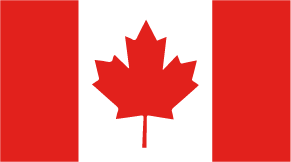June 27, 2019 | Industry Insights
Tariffs and Bond Sufficiency: How the Customs Broker Can Help

Since the onset of the trade wars between the United States and China in spring of 2018, the growth of additional duties owed for goods where the country of origin is in China is not slowing down. On May 10, 2019, the duty amount on products subject to Section 301 tariffs contained on List 3 increased from 10% to 25%. There is also concern that the U.S. will soon assess additional duties on nearly all goods from China.
The impact of these additional duties has a direct effect on U.S. Customs Import Bonds, as the bond amount is primarily calculated as 10% of the total duties, taxes and fees you have paid in the last 12 months (subject to a $50,000 minimum bond amount). As imports of goods from China continue, the additional duties owed will likely increase, causing many importers to need a larger bond.
In the last nine months we have seen an unprecedented rise in bond insufficiency notices sent out by CBP. The number of letters that used to be seen in a year is often seen in just one month. Customs brokers, importers and surety agents are all scrambling to comply within the short timeline allowed in the letter – 15 days after the date of the letter, termination must be received by CBP.
Many of the notices are for principals that have already had at least one bond increase since the inception of the increased tariffs.
Now more than ever it’s important for importers to understand their Customs Bond obligations. Maintaining a sufficient bond is the importer’s responsibility under informed compliance requirements, but it often falls to the surety agent and the customs broker to guide the importer towards a proper bond amount.
Education is key. Many importers don’t understand the ramifications of needing to increase their bond amount multiple times. Having more than one bond in a year creates a “stacking liability” or aggregate liability issue for both the surety and the importer.
When a bond, a financial instrument, is terminated and replaced, the liability represented by that bond for both the importer and the surety under that bond doesn’t go away with the termination. Depending on the entry type, the liability can remain open for years. Even under the normal liquidation cycle, entries will stay open for 314 days. Now the increased bond is written and there is open liability under that bond also. Terminate and replace a bond three or four times, and the principal becomes frustrated with the process while the surety company faces potentially serious underwriting concerns.
Help educate your customers about stacking liability and the importance of forecasting the next 12 months of duty to determine the proper bond amount going forward. They should take their annual import value and multiply it by the tariff rate for the next 12 months to come up with a bond amount that will be sufficient in the year to come.
With the implementation of the increased tariff rates, importers likely can no longer look backwards at the last 12 months of duty as it won’t be sufficient until the tariffs have been in place for an entire year. If they obtain a bond large enough to cover their yearly imports and they can avoid multiple bond replacements, it will save them time, money and frustration.
About The Author
Maya Mackey joined Roanoke Trade in 1998 and is currently an Assistant Vice President involved in new business production and account management located in the Washington DC area. Maya specializes in providing bond and insurance solutions for customs brokers, transportation intermediaries, importers and exporters. She holds the designations of CCS (Certified Customs Specialist) and AINS (Associate in General Insurance).
*Previously published in the NEI Newsletter





